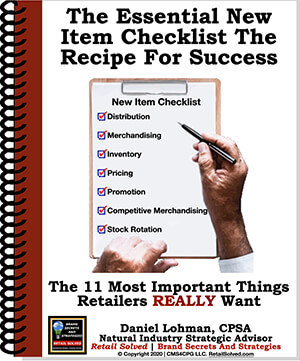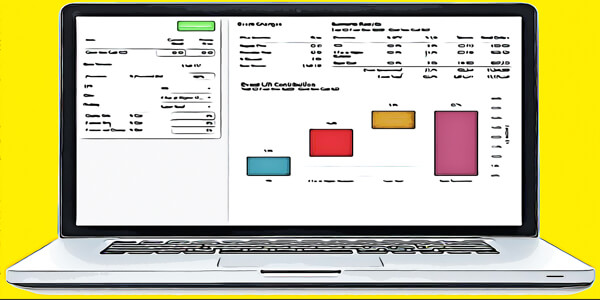Brands have (and continue to struggle with) the challenge of putting their products on retailer shelves and getting them into the hands of loyal consumers. When I started in this industry, well before the invention of category management, brands relied on retailer relationship management to grow sales. The process included giving retailers incentives and gifts. However, this practice was abused by some who “bribed” retailers with more incentives to sell their brands than their competition. The companies who could “pay” the most were frequently awarded the best shelf placement, the best displays, and the best promotional opportunities. In those days, we frequently wined and dined retailers, took them to ball games in box seats, and gave them gifts. It was extremely inefficient and expensive, making it almost impossible for small brands to gain effective retail distribution.
In the 80’s, larger brands had armies of sales representatives who would call each individual store. Our job was to sell our products into the store, physically place the items on the shelves where we thought they belonged, build displays, and place price tags on our items. There was a one-on-one relationship between the brand and store – not the brand and chain. There were no schematics, no effective product categorization, and the store manager manually ordered every item. Our competitors would follow behind us: calling on the same store, move items, move price tags, and even replace items with their products. Having a good relationship with the store manager was the best way to protect shelf space and defend against competitive threats – this is where the sporting tickets and other incentives came in handy.
In the 90’s, retailers began to consolidate. Independents and small retailer chains were bought up by larger retailers to form a more efficient grocery operation. Much of this was due to the competitive threat of Wal-Mart – a very efficient retailer with explosive growth. The consolidations created efficiencies that helped retailers compete more effectively. More importantly, brands were now able to accomplish in one sales call, what may have taken dozens of sales calls in the past. Centralized buying streamlined the selling process, making it easier for brands to manage item distribution, item pricing, promotions, and product shelf placement across an entire chain.
About the same time, several top Consumer Package Goods Companies (brands, retailers, and solution providers) began working to develop best practice scenarios and strategies that eventually became known as Category Management.
Category management was created to reduce wasteful spending and to help brands help retailers compete more effectively.
The industry’s leading manufacturers began to partner with retailers to help them grow sustainable category sales and compete effectively in local markets. The selling process and relationship began to change from being adversarial to collaborative – retailers and brands began working together to better meet the needs of shoppers.
Top CPG manufacturers are known for training and developing the best and brightest talent in the industry. Since category management was a new discipline, only a few manufacturers stood out for their category management development programs. I was fortunate to have been classically trained by both Unilever and Kimberly-Clark. A select few manufacturers shaped category management theory, best practices, tools, and procedures into the powerful and respected discipline it is today. Those same manufacturers are responsible for many of the industry advancements we currently rely on.
Category management in its infancy was a relationship between the brand and the retailer – the manufacturer’s category manager acted as a consultant for the retailer. One of the goals was helping the retailer understand what was driving category sales. Related assessment and planogram work resulted in a series of Excel-based templates that formed the first category review process. Category managers could simply populate the templates that drilled down from total category performance to item performance within the category. The standardized template provided a consistent assessment of category performance for the retailer.
Top manufacturers would add additional insights to educate the retailers on a specific category and brand drivers including shopper insights, promotion analysis, pricing analysis, market analysis, etc.
Trade spending benefited the most from category management practices. For the first time, brands were able to measure the promotional effectiveness by event and scenarios. This resulted in a shift from relationship selling to fact-based selling. Category management is fact-based selling at it’s best. Brands quickly learned to focus on trade spending ROI. It was no surprise to learn that a brand could sell more cases with a better price point than it could by giving a grocery manager box seats to a sporting event.
Category management has continued to improve. Another key strategy was to segment product categories around the way consumers shop. Within diapers, for example, there are super premium, premium, and economy diapers. Each has different pricing, promotion, and marketing strategies allowing the brand to more effectively target specific shopper groups. A key component of this strategy was the ability to help the retailer price and promote complementary segments. For example, a super premium diaper buyer would also purchase super premium baby food and baby accessories. When approached correctly, category management can help the retailer grow sustainable category sales, increase shopper market basket size (the overall size of the purchase for each shopper trip), increase shopper foot traffic (the number of consumers shopping the category), and shopper satisfaction.
The Category Management Association was formed to standardize category management. With the help of leading retailers, manufacturers, and educators they established professional accreditations for three different levels of category management proficiency: Certified Professional Category Analyst (CPCA), Certified Professional Category Manager (CPCM), and Certified Professional Strategic Advisor (CPSA), the highest level. Certification officially began in 2010. I am the first CPSA.
I can remember drawing my first schematics as a grocery manager on a legal pad and managing category sales, assortment, and inventory in Lotus 123 (the predecessor to Excel). Technology has always been a key component of category management. Early on, templates were all spreadsheet-driven with few actionable analytics. The available retailer data was not very robust and there were few tools to analyze it. Imagine having to re-segment the category each and every month and then rolling individual store item movement up to get total chain sales for an item, brand, and category. That is exactly what we did when category management was new. It was extremely labor intensive and results were slow to come by. The category managers who stood out were those who could automate reporting and analytics. A category managers skills in Visual Basic were almost more important than their skills in data analysis. We set the stage and raised the bar in reporting capabilities and industry standardization.
Technology has improved dramatically over the last 30 years. Today there are a lot of solution providers developing software capable of aggregating large quantities of data. SaaS companies offer products packaged as robust solutions to create structured data and enhanced reporting. As technology has improved, so have the available measures category managers have available to assess and measure category performance. This aggregated data, combined with statistical analysis is used to evaluate the success of an item, brand, category, or promotion. Some solutions are capable of generating and analyzing total store schematics in any configuration the retailer wishes. Some marry shopper/consumer data to the transaction data and provide predictive analysis to help brands and retailers later target shoppers. These tools have produced a lot of time and labor saving efficiencies that have benefited category managers.
These tools are great but they are limited by category, industry, and channel. The available resources, for example, are night-and-day different in the natural channel compared to mainstream (conventional) grocery. The benefits of what I call “True Category Management*” help brands and retailers stand out and give smaller brands an “equal” seat at the table. For example, brands do not have a clean “line of sight” (the ability to measure brand sales and competitor performance at shelf) across the entire natural retailer landscape. In this case, third-party vendor management tools are key to helping brands effectively manage distribution, merchandising, pricing, and item performance.
While most tools claim to be an end-to-end all-encompassing solution, they cannot replace the insights a talented category manager can provide. The tools are a great starting point for analysis and discussion. However, just as the same as the autopilot should not replace the pilot in the cockpit, they should not be used in place of well-trained category managers.
I call this “push-button” category management. These tools frequently overlook the shopper and their needs. Consumers today have a seemingly endless number of choices as to where they buy, what they buy, and when they buy. The bottom line is that shoppers make decisions based on their wants and needs – always. Category managers who focus first on this will continually “win at shelf.”
Click here to see more brand building strategies and to assess the health of your brand
*True Category Management does not rely on “push-button” analytics. It transcends well beyond traditional resources to develop deep dive actionable consumer-driven insights capable of helping a brand or retailer compete more effectively in any channel and any economy.

Want A Competitive Edge? The Recipe For Success
New product innovation is the lifeblood of every brand. New products fuel sustainable growth, attract new shoppers and increase brand awareness. Know the critical steps to get your product on more retailer’s shelves and into the hands of more shoppers.
Empowering Brands | Raising The Bar
Ever wish you just had a roadmap? Well, now you do!
Don’t miss out on all of these FREE RESOURCES (strategic downloadable guides, podcast episodes, list of questions you need to be asking, and know the answers to, the weekly newsletter, articles, and tips of the week. You will also receive access to quick and easy online courses that teach you how to get your brand on the shelf, expand distribution, understand what retailers REALLY want, and address your most pressing challenges and questions.
All tools that you can use, AT NO CHARGE TO YOU, to save you valuable time and money and grow your sales today!
Image is the property of CMS4CPG LLC, distribution or reproduction is expressively prohibited.



